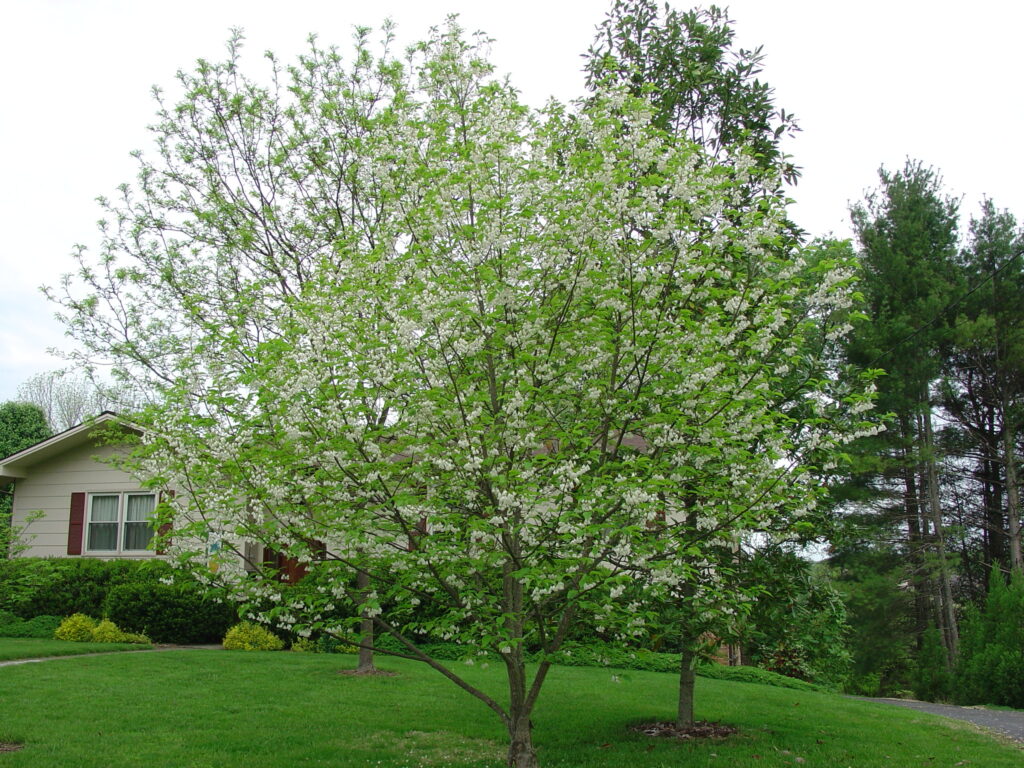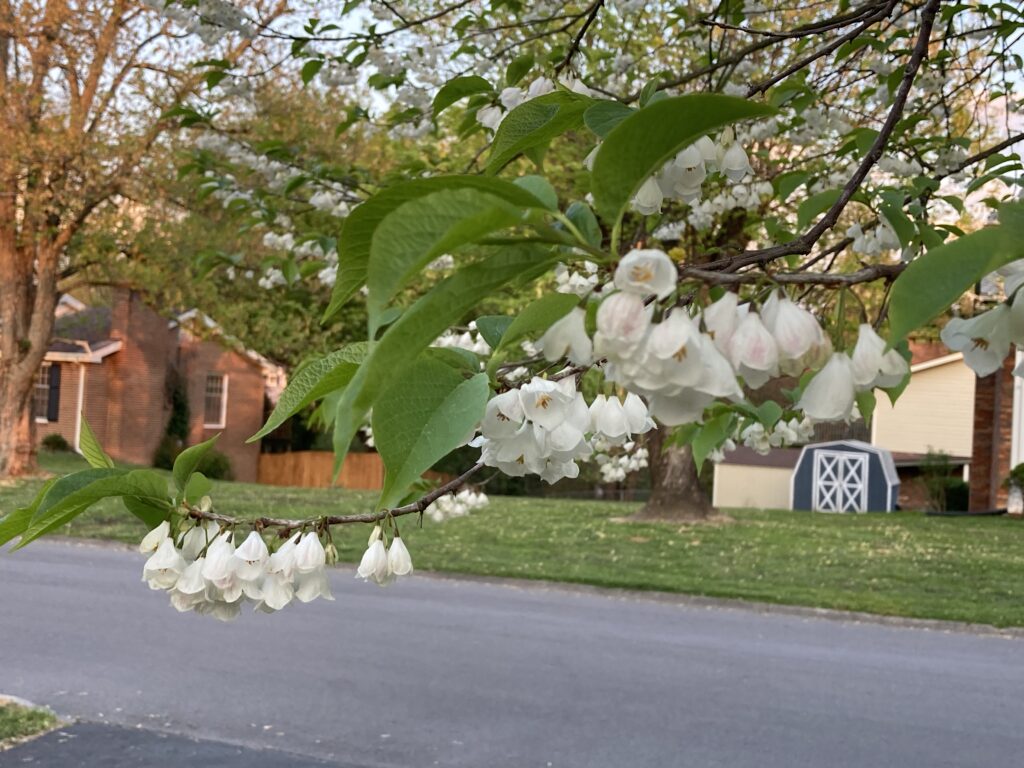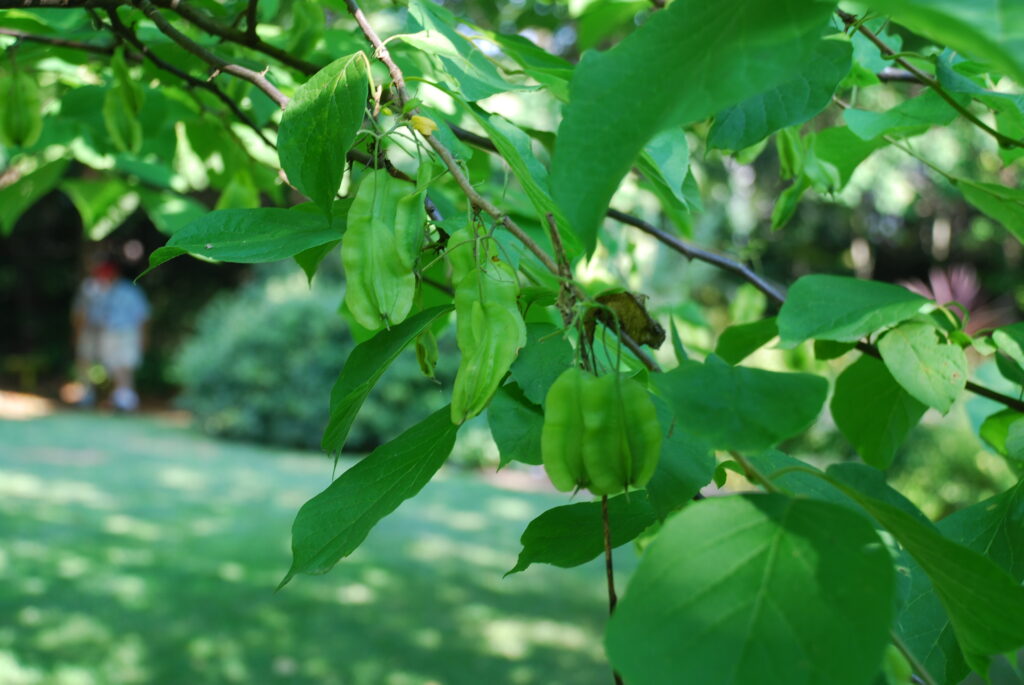
To start, the botanical literature is a little confusing regarding the two silverbell species. Mountain silverbell (Halesia tetraptera; formerly H. carolina) and two-winged silverbell (H. diptera) are native to the Appalachian Mountains of Tennessee, North Carolina and Georgia. (Zones 6-9).
Silverbells are either small- to medium-sized deciduous trees or large, multi-stemmed shrubs. It blooms in the spring (late-March to late-April) with white bell-shaped flowers that hang in clusters on year-old branches. Silverbells are in the Styrax plant family (Styracaceae) along with the snowbells (Styrax spp.).
Silverbell spring flowering is stunningly beautiful when set on or nearby a patio or planted at the edge of a woodlands. They’re naturally understory trees with a medium growth rate. Mountain silverbell may reach heights of 30 – 40 feet, whereas two-winged silverbell is smaller with a mature height between 20 – 30 feet. Both have a rounded tree canopy.
Flowers on two-winged silverbell average ¾-inch long. Mountain silverbell (H. tetraptera var. monticola) has larger white flowers than Carolina silverbell. It bears 4-winged green pods mature to brown. 2 inches long in fall. At the nursery, producers train them into a multi-stemmed small tree or a single trunk tree.

Silverbells thrive in rich, well-drained soil containing abundant organic matter. In their natural habitat silverbells grow moist acidic (pH 5.0 to 6.0), and the woodland floor is organically littered (mulched). Guard against the late summer foliage becoming chlorotic (yellow), a sign that the soil pH is not low (acidic) enough. A two-year old established tree is moderately drought tolerant.
Fertilize once in the spring with a slow-release acidic organic fertilizer. Silverbells tend to transplant well, preferring containerized rather than balled-and-burlapped (B&B) trees. Do not (never) attempt to dig a silverbell tree out from the wild.
Fall foliage often turns an attractive yellow before abscising and the bark adds winter interest with its contrasting striations. Silverbells generally have no pests of major concern. The species is susceptible to Phytophthora root rot that can be problematic in organically deficient and poorly drained soils.

Cultivars To Look For:
‘Arnold Pink’ forms large 3/4 in. rose pink pendulous flowers hang from the branches in spring.
‘Magniflora’ produces larger flowers (to 1 1/2″ wide) and reportedly flowers.
H. tetraptera var. rosea bears pink-blushed flowers.
‘Jersey Belle’ (H. tetraptera) bears extra-large white bell-shaped flowers.
‘Wedding Bells’ is a 20-foot smaller tree that is highly floriferous.

 Posted in
Posted in 
